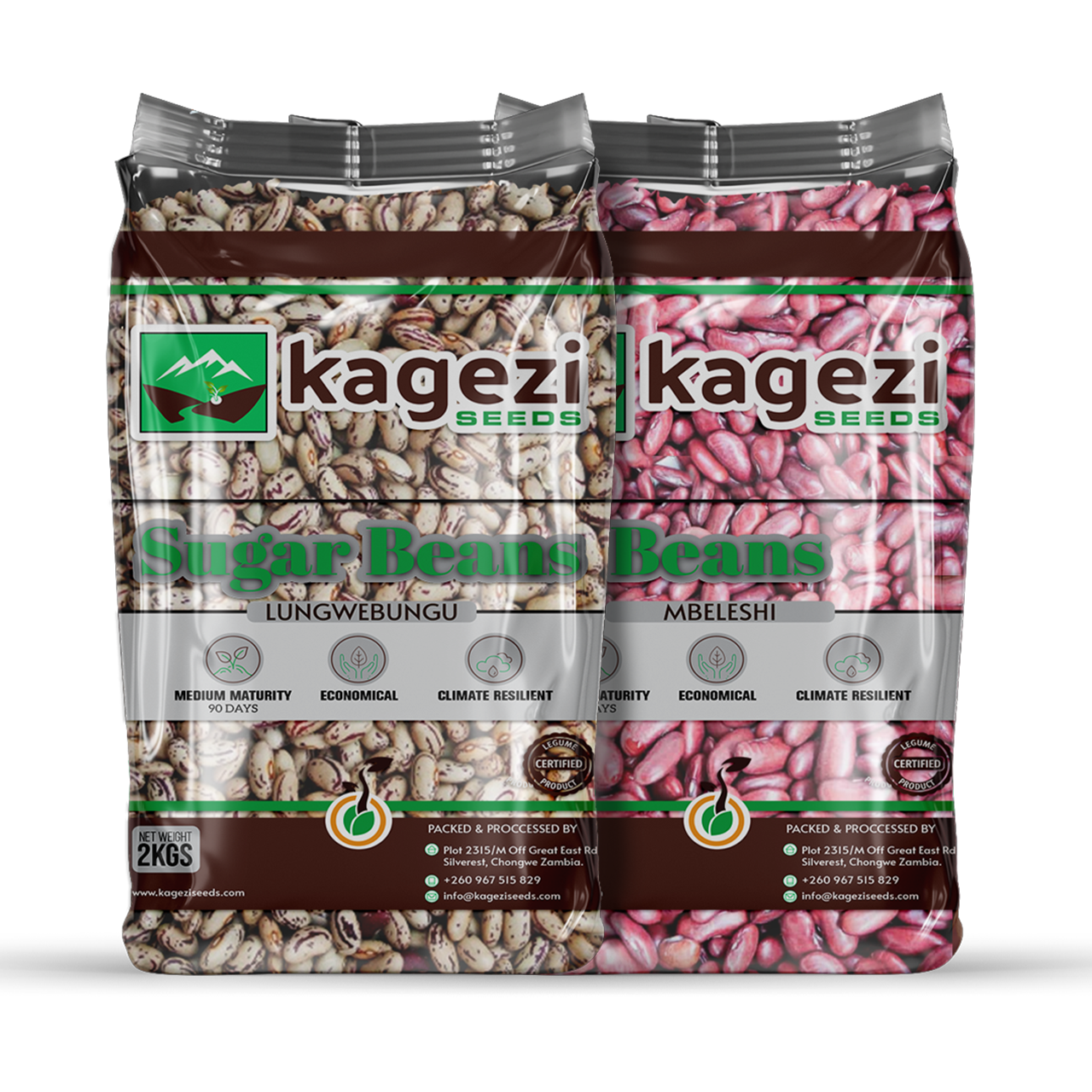The Benefits Of Beans & Sugar Beans
Beans are a versatile and nutrient-dense food that offer several health benefits. They are a good source of plant-based protein, dietary fiber, and essential micronutrients like iron, folate, and potassium. The high fiber content in beans promotes digestive health and helps reduce the risk of heart disease and diabetes by regulating blood sugar and cholesterol levels.
Additionally, beans have a low glycemic index, making them a suitable food for individuals with diabetes. Moreover, consuming beans has been associated with weight loss, improved gut microbiota, and reduced risk of certain types of cancer. With a wide range of varieties and uses in dishes, including salads, soups, stews, and dips, beans are a delicious and nutritious addition to any diet.

Planting Beans
Plant Characteristics:
- Seed rate: 60kg/ha
- Potential Yield: 1500-2000 Kg /ha
- Maturing: 85 – 90 days (medium)
- Days to Flowering: 32-36 days
- Spacing: 60X10 cm
- Planting depth: 3-6cm
Planting time:
- Region III: Planting to be done late December to Mid-January
- Region II: planting to be done early December to early January.
- Region I: plant early December to early January
- Off-season planting under irrigation: after Mid-July
- Soils – Water and Soil Requirements:
Adaptation: Regions III and II and Region I.
- Warm soil with a minimum temperature of 13 degrees Celsius
Rainfall below 350-700 mm per annum and high surface temperature (30 – 40 C) - Well-drained fertile soils with a depth of at least 90cm.
It is tolerant to soil Ph. 5.5-6.5 and very sensitive to acidic soils
Seedbed Preparation:
- Does well in a deeply ploughed and fine seedbed
Fertilizer recommendation:
150-200 kg ha- for the basal dressing of ‘D’ compound (N10:P20:K10:S6) on planting followed by a top dressing of Urea (46% N) at 100 KG/ha after three weeks from planting compound as basal and 50 kg/ha of urea as a top dressing. - Weed control: Highly recommended
Diseases & pests:
- Resistance to common bacteria blight, angular leaf spot, and anthracnose.
Storage:
- Thresh grain and mix with 1% Malathion, blue cross or actellic and store in a cool dry place.
Uses:
- Both leaves and seed are eaten as a source of protein and Iron.
Used as a green manure crop because of nitrogen fixation or in crop rotation with cereals.
Can be used as a cover crop.
Used as forage for animals.